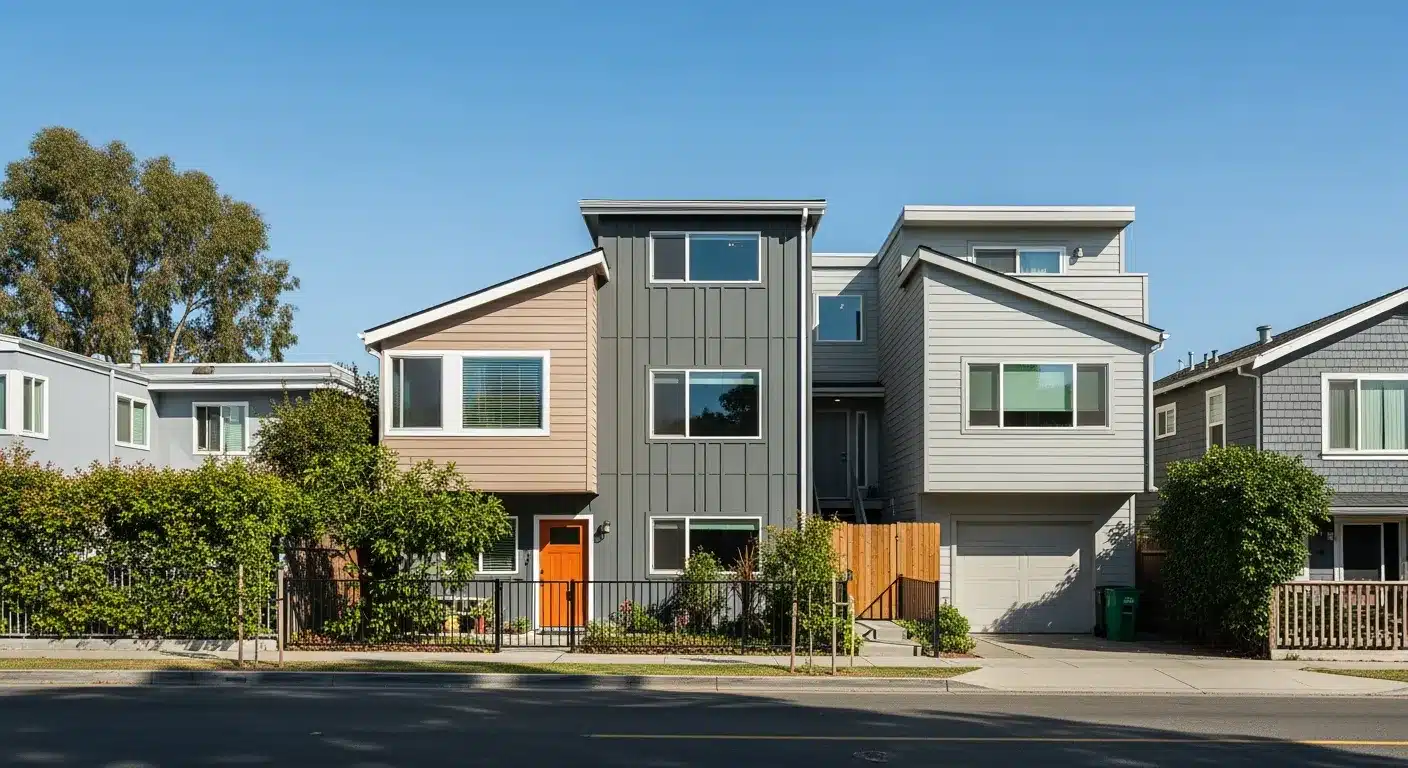
This post was last modified on July 7, 2025.
California’s accessory dwelling unit (ADU) boom raises significant questions about its impact on housing affordability. While these units can provide homeowners with rental income and create smaller, more affordable living spaces, several obstacles could undermine their effectiveness. Regulatory challenges and community opposition often limit ADU construction, leaving you to wonder: can these units really address the state’s housing crisis, or do they merely complicate the environment further?
Overview of ADU Construction Trends in California
As California grapples with a persistent housing crisis, the rapid growth of Accessory Dwelling Units (ADUs) reflects a significant shift in residential construction trends.
In 2023, permits for 26,924 new ADUs were issued, with the San Francisco Bay Area showing a notable increase. This surge is driven by simplified permitting processes, evolving ADU design, and a growing homeowner interest in flexible housing solutions.
Key construction methods, such as modular designs, enhance affordability and reduce build times.
Demographic trends highlight the rising need for multigenerational living and rental options, while innovative financing options, including ADU-specific loans, help mitigate initial costs. Furthermore, the expected decrease in mortgage rates will potentially boost demand for ADUs as more buyers seek affordable housing solutions.
Legislative Changes Supporting ADU Development
With the growing recognition of Accessory Dwelling Units (ADUs) as a viable solution to California’s housing crisis, recent legislative changes have greatly reshaped the environment for their development.
The expansion of HCD authority allows for thorough enforcement of state ADU laws, enhancing regulatory oversight. Additionally, the consolidation of ADU regulations through SB 477 creates a streamlined legal framework, making it easier for property owners to navigate the permitting process.
Significantly, the 2025 updates eliminate owner-occupancy requirements and increase the number of allowed ADUs on multifamily lots, encouraging broader adoption. These changes aim to reduce barriers, promote clarity, and ultimately increase the legal stock of ADUs, addressing California’s pressing housing supply issues more effectively. Furthermore, initiatives like Accessory Dwelling Units (ADUs) increase housing density, which is essential for tackling the affordability crisis.
ADUs as a Solution for Affordable Housing
Accessory Dwelling Units (ADUs) arise as a practical solution to California’s affordable housing dilemma, greatly increasing the housing supply and accessibility across the state.
In 2023, California permitted 26,924 ADUs, showcasing their growing role in housing diversity. By providing smaller, more affordable options, ADUs enable homeowners to generate rental income, effectively expanding the affordable rental stock.
Additionally, ADUs often have lower rental rates compared to market units, positively impacting overall affordability. As they utilize existing lots, ADUs efficiently address housing shortages, reducing the need for extensive new developments. Moreover, the growing demand for eco-friendly properties aligns with the features of many ADUs, promoting sustainability in housing solutions.
While financing challenges persist, ongoing support programs can enhance ADU benefits, making them a significant component of California’s multifaceted approach to affordable housing solutions.
Challenges and Limitations of ADUs
While ADUs present a promising avenue for increasing affordable housing in California, several challenges and limitations hinder their widespread adoption.
Regulatory hurdles persist despite state reforms, as cities impose costly restrictions like expensive parking requirements and zoning constraints that deter development.
Additionally, financing challenges complicate the process; traditional mortgages often don’t accommodate ADU projects, and alternative methods like home equity lines of credit come with strict requirements. This limits many homeowners’ ability to fund their ADU ambitions.
Furthermore, physical site limitations and community resistance further restrict opportunities, especially in densely populated areas.
Without addressing these significant barriers, the potential of ADUs to enhance housing affordability in California remains unrealized.
Broader Implications of the ADU Movement
As California embraces the ADU movement, the implications extend far beyond mere housing solutions.
You’ll notice significant demographic shifts as ADUs foster multigenerational living and diversify neighborhood profiles, allowing various household types to coexist.
Economically, the benefits are substantial; properties with ADUs often see higher appraised values, increasing homeowners’ equity and enhancing local tax revenues.
The construction and home improvement sectors gain momentum as ADUs stimulate investment, while expanded financing options make these units more accessible.
Although ADUs won’t fully resolve the housing shortage, they contribute by providing affordable rental options, easing pressure on the market.
Frequently Asked Questions
How Does an ADU Impact Property Taxes for Homeowners?
Adding an ADU increases your property taxes based on its valuation effects, which directly influence property tax implications. Expect a significant rise in taxes as the ADU’s assessed value integrates with your existing home assessment.
What Financing Options Are Available for ADU Construction?
You’ve got several financing options for ADU construction, including construction loans and financing grants like the CalHFA ADU Grant Program. These resources can help make your project financially feasible while potentially increasing your property’s value.
Can ADUS Be Converted Back to Original Homes?
Yes, ADU conversions can revert back to original homeownership, but local regulations and structural constraints may complicate the process. Compliance with safety codes is necessary to guarantee successful conversion and alignment with zoning ordinances.
How Do Local Communities Feel About ADU Developments?
Local communities generally support ADU developments, recognizing their potential benefits. However, concerns about neighborhood interactions and equity persist, revealing mixed community perspectives on how these units impact local character and infrastructure needs.
What Maintenance Challenges Do ADUS Present for Homeowners?
ADUs significantly increase maintenance costs and homeowner responsibilities, as you’ll need to manage utilities and conduct regular inspections. Specialized repairs often arise unpredictably, complicating your financial planning and demanding proactive upkeep strategies to mitigate unexpected burdens.




